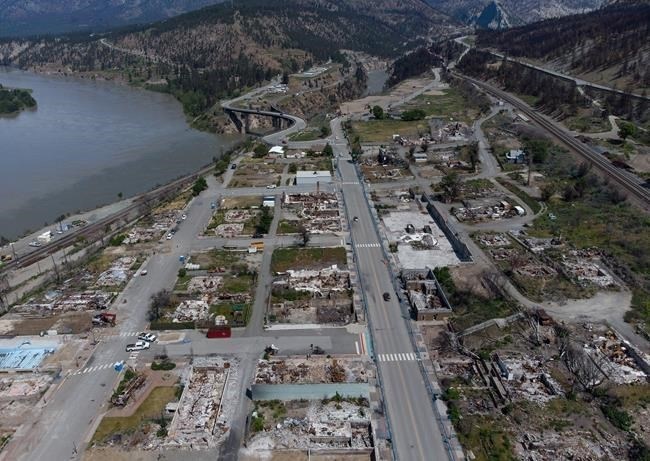
The ruins of houses and businesses are seen in Lytton, B.C., on Wednesday, June 15, 2022, almost a year after the town was destroyed by fire during the heat dome weather event.
Image Credit: THE CANADIAN PRESS/Darryl Dyck
September 26, 2024 - 7:00 PM
Three years after a wildfire destroyed Lytton, the disaster has left a lingering gap in food security.
In response, the Nlaka’pamux Nation Tribal Council’s (NNTC), which represents five communities including Lytton First Nation, is sounding the alarm on food security in the region.
“The NNTC has zero examples of recovery progress to supply food and essential household supplies for people affected by the 2021 wildfire and the loss of the local grocery store,” a press release from the tribal council said.
Matt Pasco, Chief of the NNTC, is calling on provincial and federal governments to fund a relief centre for Lytton region nations. Funding for a food security hub was about to end on October 1, but was recently extended for another three months. However, Pasco believes that a long term solution such as a permanent relief centre is still needed.
The permanent relief centre was suggested by a task force that was created following the 2021 wildfire, and the recommendation was adopted by the federal and provincial governments, who signed commitment letters. But now, Pasco says that both the feds and province are ignoring the advice of the task force, pointing to the tribal council to government programs.
“Even though the commitment letters committed the governments to doing things differently with the spirit of helping the people most in need, they're really not doing that,” Pasco said.
Pasco saw firsthand the need for a one-stop relief centre to help the First Nations he represents deal with wildfires in the region this summer. He says there was “essentially no place to be able to do a variety of things, whether it was emergency response activity, being able to manage and help communities through the problems and so on.”
It's an issue, as Pasco notes that Indigenous Peoples are among the most impacted population groups of environmental disasters.
“The ability to have a relief center goes way beyond just food security, it also is a way that we can help manage the myriad of emergency issues that come along,” he explained. “We have no place.”
To help the community with its recovery, the federal government has provided over $120M for rebuilding and to establish a temporary on-reserve grocery store [and] a food hub, Jennifer Kozelj, press secretary for Indigenous Services Canada minister Patty Hajdu said in a statement.
“Our message to Lytton First Nation then, remains the same now: we will be with you every step of the way as you recover and build back better,” she said.
Hajdu recently visited Lytton First Nation in April and saw both the devastation and the inspiring work by the Lytton Chief and council toward the community’s rebuild, Kozelj said.
However, Pasco is wary that grocery stores alone will be sufficient to meet the needs of the NNTC First Nations. Grocery stores exist in the realm of markets and supply and demand, and price fluctuations can leave people hungry, he said. Meanwhile, there are greater social issues involved for some community members that require a permanent solution that provides essential supplies to people in need.
The demand from the NNTC arrives only a few months before the federal government’s fall economic statement and ahead of a heated B.C. election where climate change remains a contested file.
— This story was originally published by Canada's National Observer
News from © iNFOnews, 2024